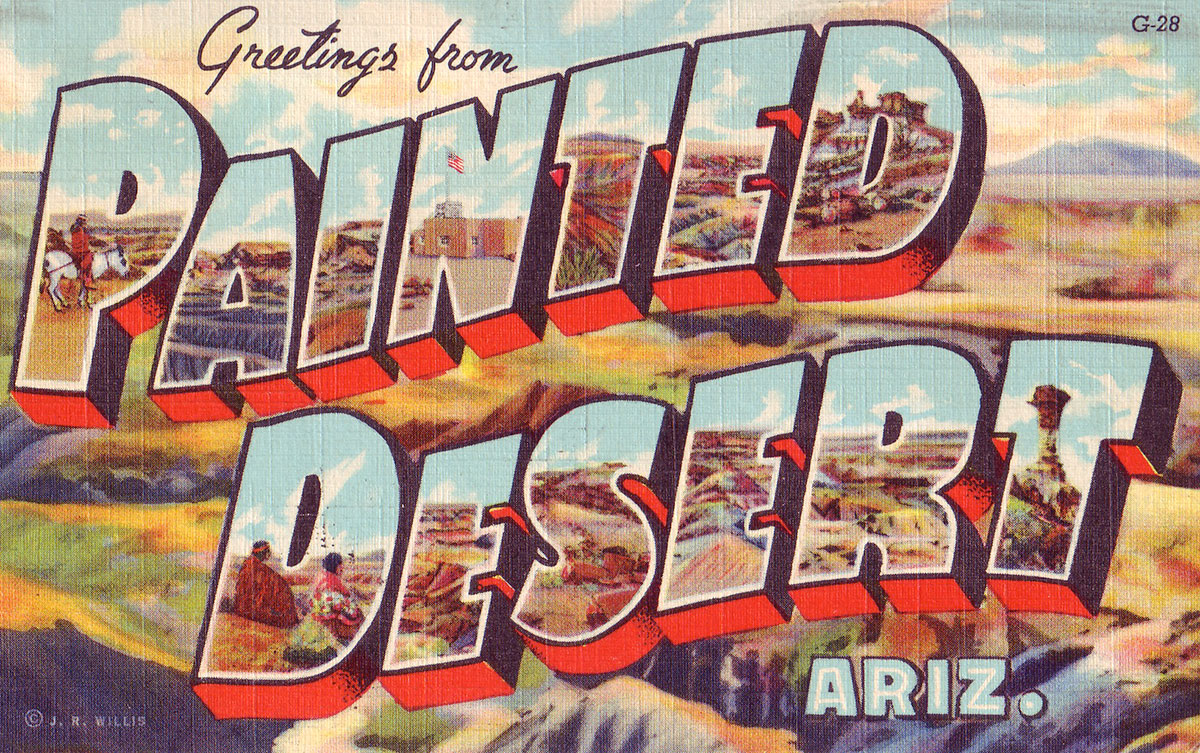
Neutra's Last Standing National Park Project is Right Here in Arizona
The Painted Desert Visitor Center and Complex by Richard Neutra is Ready for her Closeup By Alison King
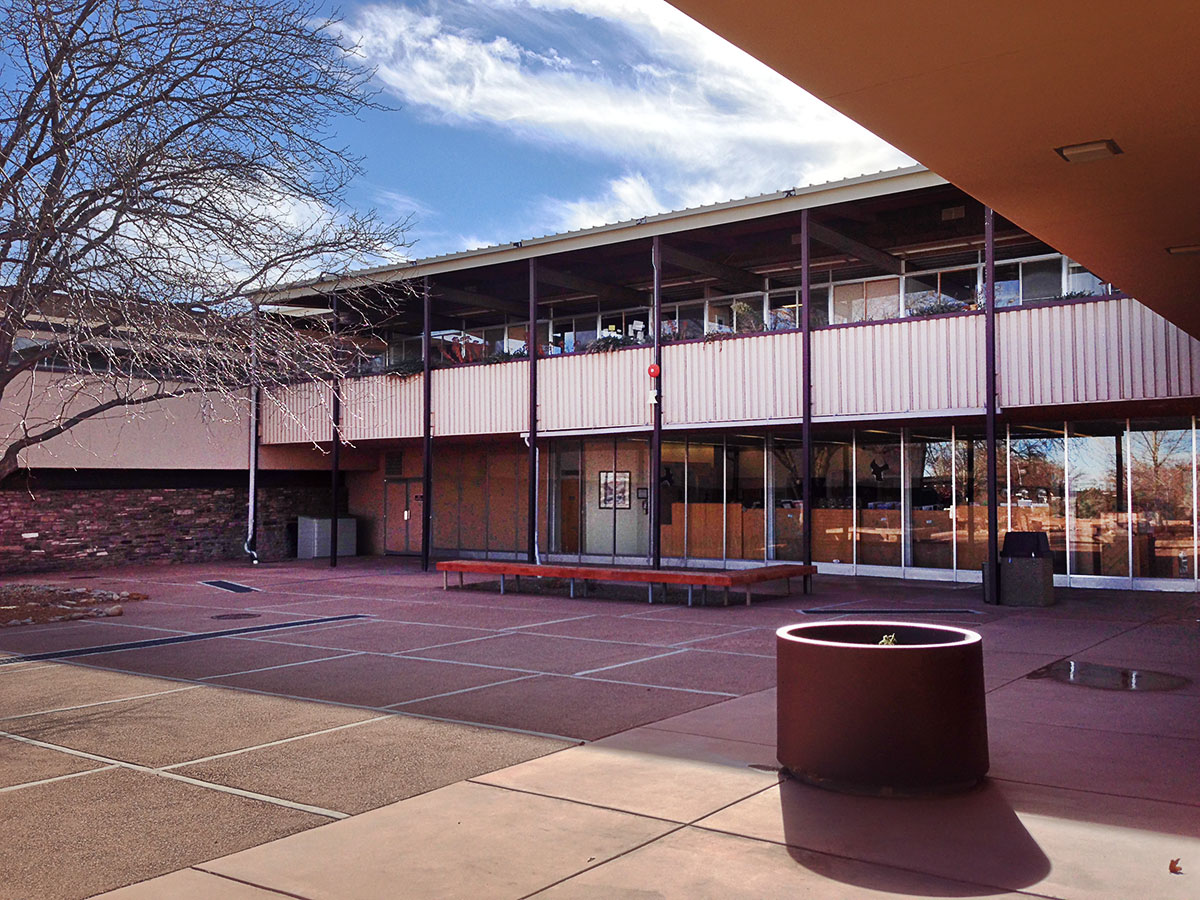 Did you know that famed modern architect Richard Neutra designed homes in Arizona? Neither did we, until we found out about not just homes, but an entire complex dedicated to outreach, learning, hospitality and residential life at the Painted Desert Visitor Center in Northern Arizona.
Did you know that famed modern architect Richard Neutra designed homes in Arizona? Neither did we, until we found out about not just homes, but an entire complex dedicated to outreach, learning, hospitality and residential life at the Painted Desert Visitor Center in Northern Arizona.
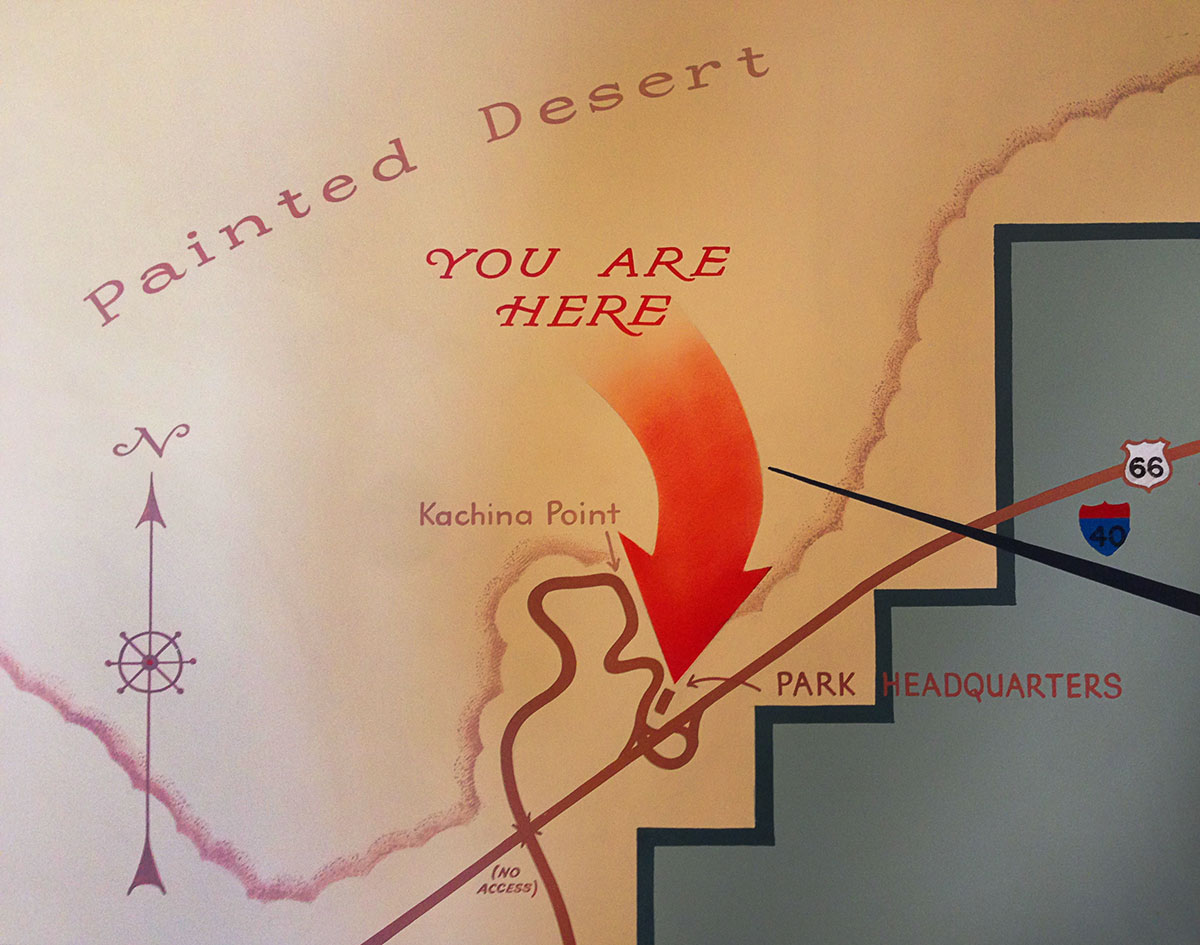 You are here! A stone's throw away from Route 66 and right out of a scene out of Disney's movie Cars -- only wait a minute, this was the original inspiration for much of the landscape featured in the wildly popular animated film. So before we get back to the Neutra, let's pull over and take a moment to remember why we're here in the first place.
You are here! A stone's throw away from Route 66 and right out of a scene out of Disney's movie Cars -- only wait a minute, this was the original inspiration for much of the landscape featured in the wildly popular animated film. So before we get back to the Neutra, let's pull over and take a moment to remember why we're here in the first place.
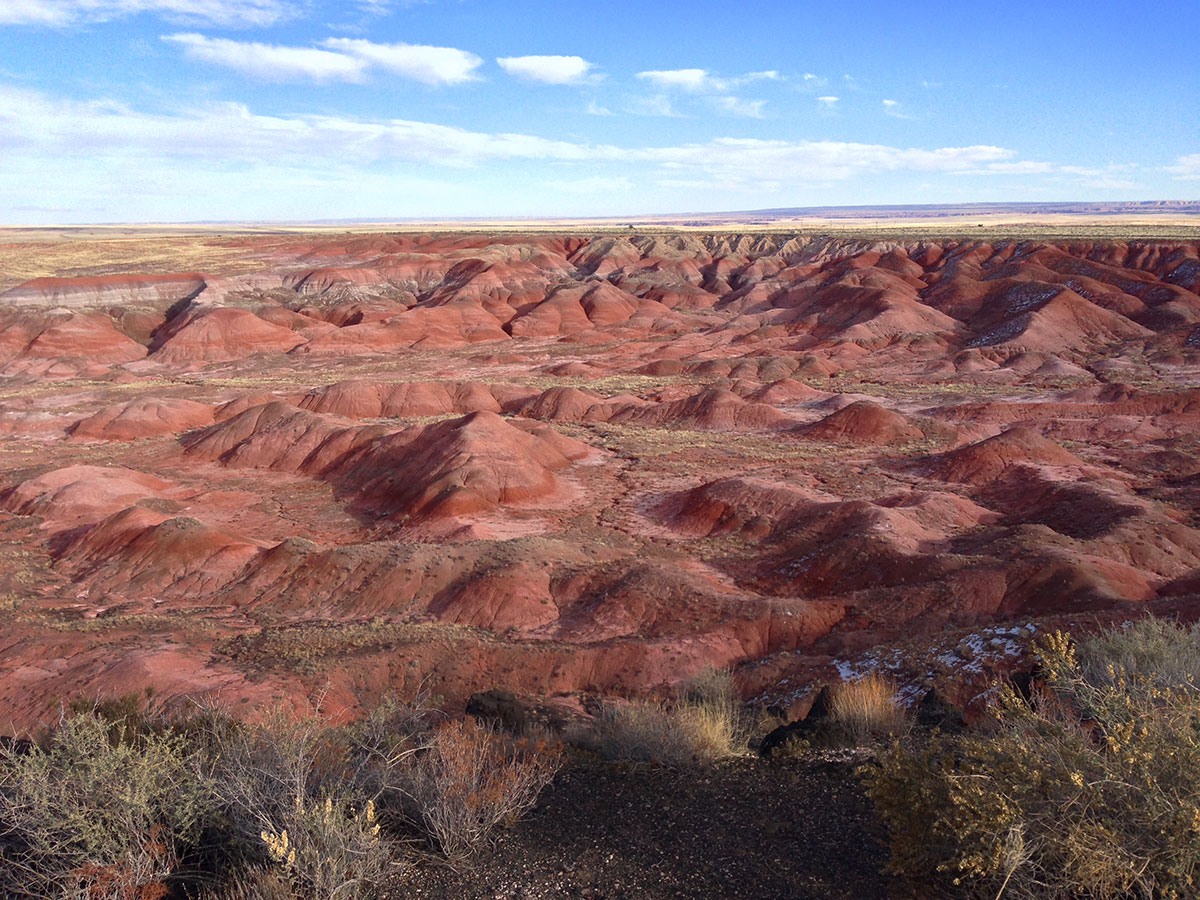 Arizona's Painted Desert is a roughly 7,500 square mile area, much of it contained within the Navajo Nation, abutting the Petrified Forest National Park. It is geologically significant for evidence of the late Triassic period and the native cultures that followed. Climatic conditions make it an ideal grounds for the study and appreciation of both nature and man. While most of the park is enjoyed by car for its breathtaking vistas and formations, scientific and cultural research still happens here every day. Enter the Painted Desert Complex and its purpose.
Arizona's Painted Desert is a roughly 7,500 square mile area, much of it contained within the Navajo Nation, abutting the Petrified Forest National Park. It is geologically significant for evidence of the late Triassic period and the native cultures that followed. Climatic conditions make it an ideal grounds for the study and appreciation of both nature and man. While most of the park is enjoyed by car for its breathtaking vistas and formations, scientific and cultural research still happens here every day. Enter the Painted Desert Complex and its purpose.
 In the mid 1950s, the Eisenhower administration funded a ten-year program to upgrade the National Parks system in response to the huge visitor boom after World War II. The program came to be known as Mission 66. Prewar park facilities were rustic, small and unable to cope with the new volumes of tourists passing through. The concept of a Visitor Center was used to streamline and standardize the visitor experience, and the architecture was programmed to contrast with—not blend in with—the existing site. Later the effort engaged standardized identity, signage and graphic arts with Massimo Vignelli's Unigrid System for the display of information. It is a system that is still in use today.
In the mid 1950s, the Eisenhower administration funded a ten-year program to upgrade the National Parks system in response to the huge visitor boom after World War II. The program came to be known as Mission 66. Prewar park facilities were rustic, small and unable to cope with the new volumes of tourists passing through. The concept of a Visitor Center was used to streamline and standardize the visitor experience, and the architecture was programmed to contrast with—not blend in with—the existing site. Later the effort engaged standardized identity, signage and graphic arts with Massimo Vignelli's Unigrid System for the display of information. It is a system that is still in use today.
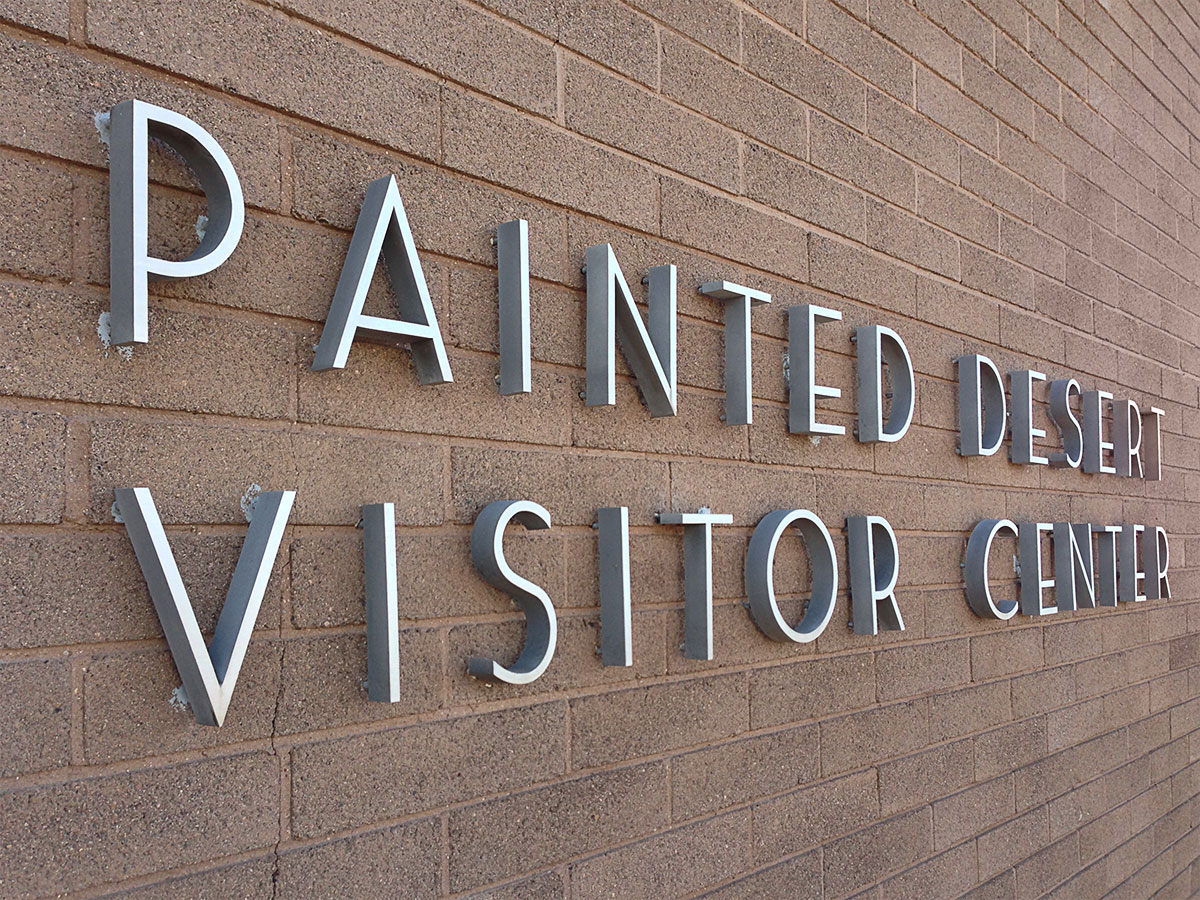 What many may not realize is that the Visitor Center isn't just for tourists, it's a working campus where dozens are housed to host and maintain the park. Scholars visit for extended periods to research, and scientists gather to study and exchange ideas.
What many may not realize is that the Visitor Center isn't just for tourists, it's a working campus where dozens are housed to host and maintain the park. Scholars visit for extended periods to research, and scientists gather to study and exchange ideas.
 The typical user experience at the Neutra-designed complex begins via automobile as an exit off Route 66, with a pass through the ranger checkpoint, then option to refuel at the gas station, refresh at the restaurant or reflect on history at the visitor center. But the typical user doesn't get to see that there's an entire miniature city behind the scenes.
The typical user experience at the Neutra-designed complex begins via automobile as an exit off Route 66, with a pass through the ranger checkpoint, then option to refuel at the gas station, refresh at the restaurant or reflect on history at the visitor center. But the typical user doesn't get to see that there's an entire miniature city behind the scenes.
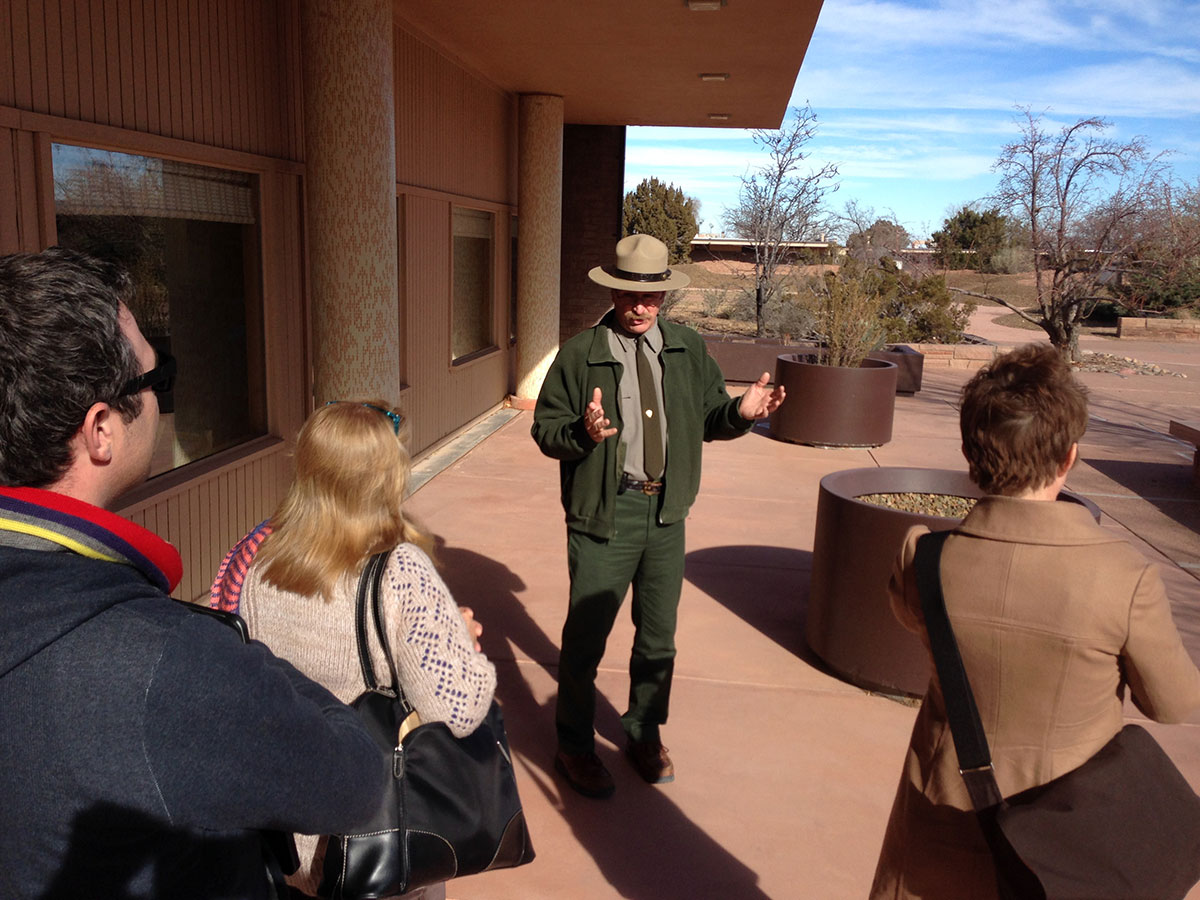 Park Superintendent Brad Traver guided Demion Clinco of the Tucson Preservation Foundation, Alison King of Modern Phoenix, and Chris Morris and Deb Grant of the National Trust for Historic Preservation through a tour of his favorite park facility in winter of 2013 to help us understand what makes the complex exceptional. The clever organization of space and the overall master plan are what attracted Traver to spend the last phase of his career working at—and striving to restore—the Neutra-designed complex.
Park Superintendent Brad Traver guided Demion Clinco of the Tucson Preservation Foundation, Alison King of Modern Phoenix, and Chris Morris and Deb Grant of the National Trust for Historic Preservation through a tour of his favorite park facility in winter of 2013 to help us understand what makes the complex exceptional. The clever organization of space and the overall master plan are what attracted Traver to spend the last phase of his career working at—and striving to restore—the Neutra-designed complex.
 Nearly 50 years of continuous use have resulted in a lot of wear and tear on the facility grounds, much of it structural. The current paint scheme is not in line with the original historic palette of white, red, deep turquoise and yellow-gold, which is a variation of a primary triad.
Other expressed materials include wood, steel and aluminum.
Nearly 50 years of continuous use have resulted in a lot of wear and tear on the facility grounds, much of it structural. The current paint scheme is not in line with the original historic palette of white, red, deep turquoise and yellow-gold, which is a variation of a primary triad.
Other expressed materials include wood, steel and aluminum.
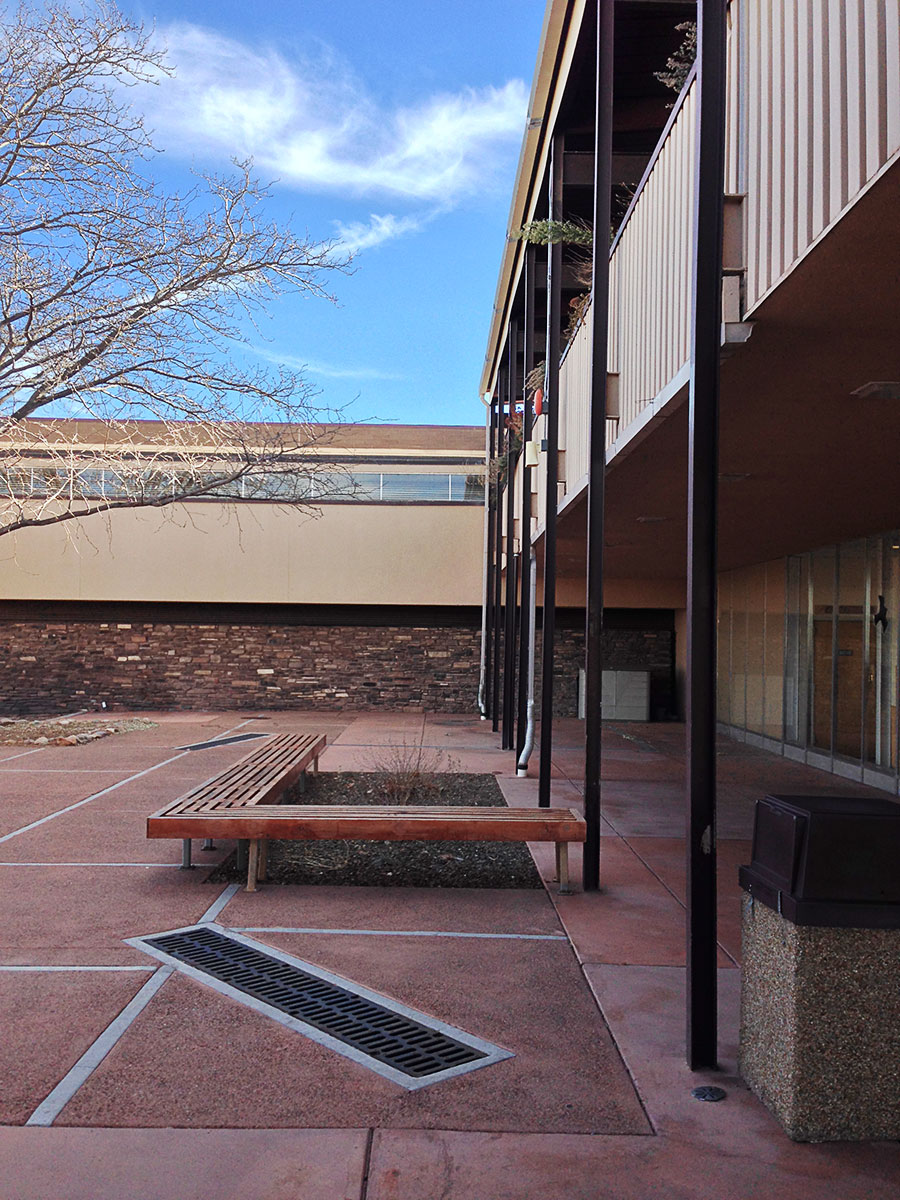 The roof above the terrace is an 80s-era addition that Traver is raising funds to get removed. When peeled back, the original "spider legs" spanning over the balcony will be revealed. The front edge of the balcony could easily be restored back to its original red color. Many of the alterations to the architecture over the decades have been related to increasing efficiency for heating and cooling. The site could become a demonstration for 21st century green building strategies that are more sensitive to the original modern lines.
The roof above the terrace is an 80s-era addition that Traver is raising funds to get removed. When peeled back, the original "spider legs" spanning over the balcony will be revealed. The front edge of the balcony could easily be restored back to its original red color. Many of the alterations to the architecture over the decades have been related to increasing efficiency for heating and cooling. The site could become a demonstration for 21st century green building strategies that are more sensitive to the original modern lines.
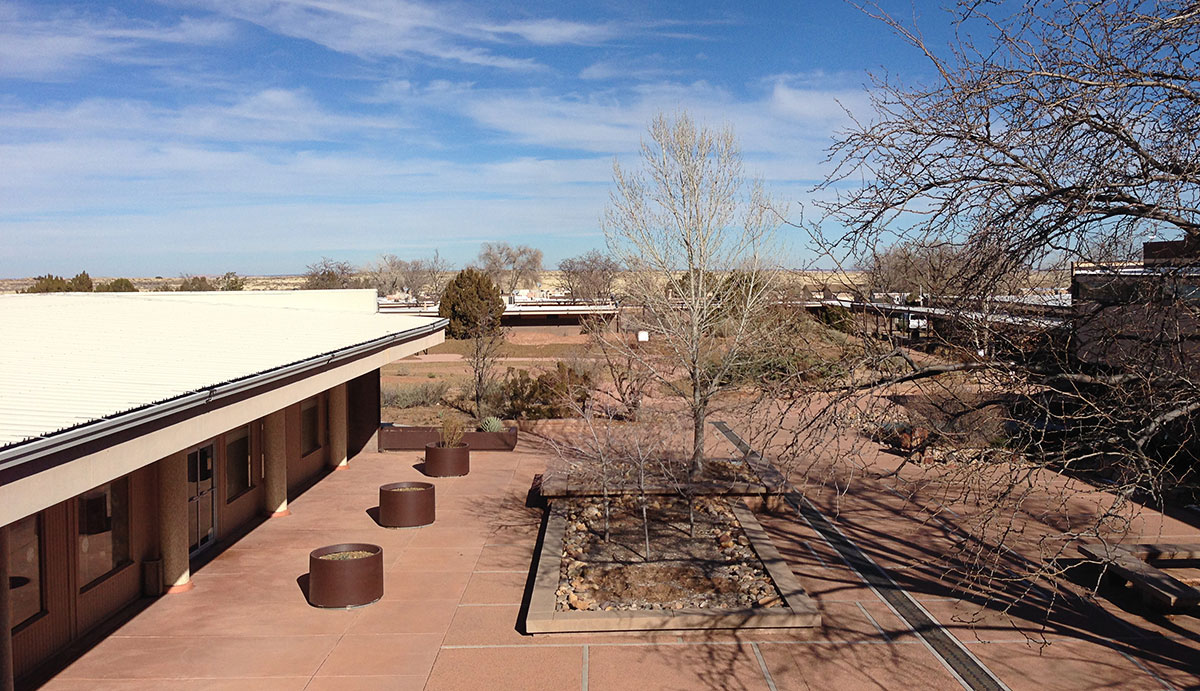 The view from the balcony is one only park employees and researchers get to enjoy. If restored, the planters would return to white, and the storefront of the Fred Harvey concession area would return to floor to ceiling windows.
The view from the balcony is one only park employees and researchers get to enjoy. If restored, the planters would return to white, and the storefront of the Fred Harvey concession area would return to floor to ceiling windows.
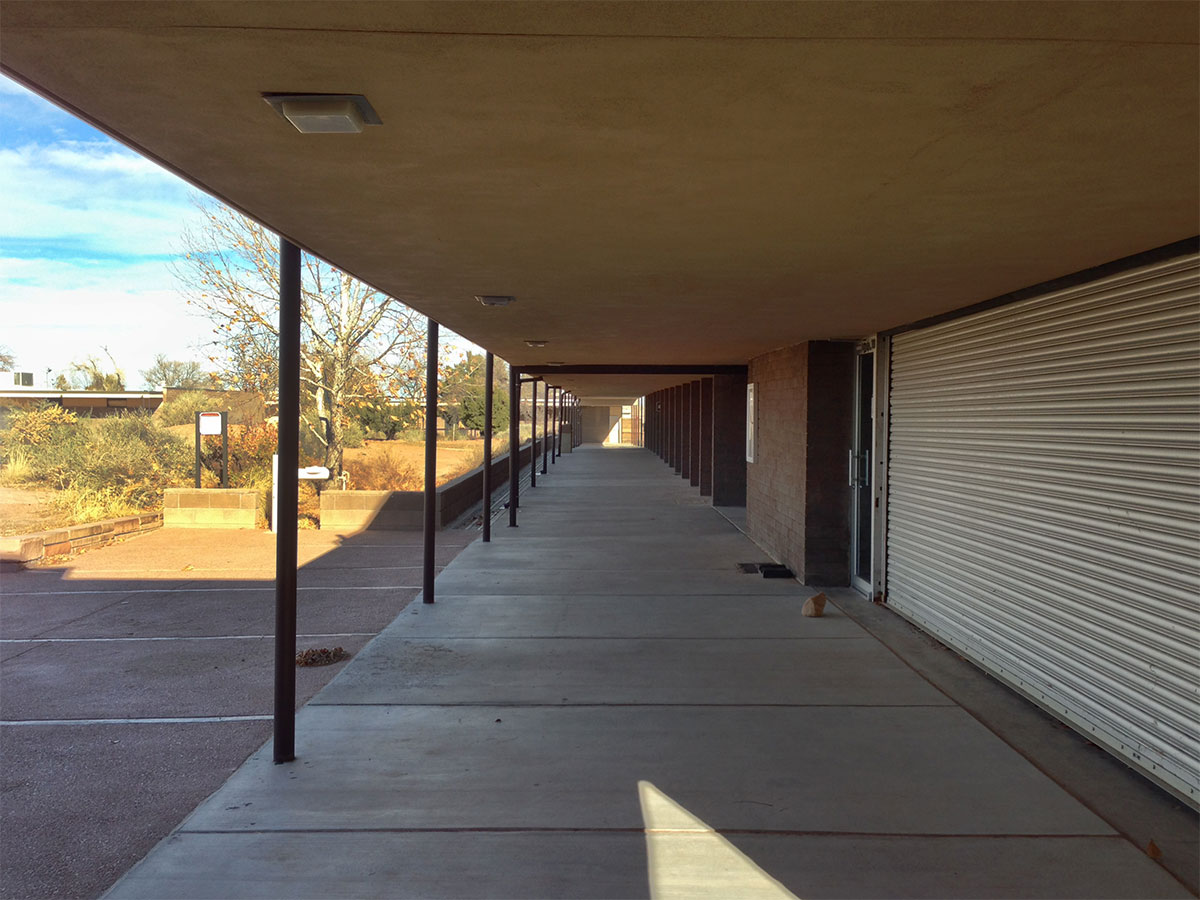 This outdoor corridor bridges the transition between public and private spaces. Community meeting areas are to the right, and private residential housing is forward. A new outdoor interpretive park space is in the process of being installed on the left.
The triplex housing facilities are in such critical shape that there is not much to show here today—however the bones are interesting, feature extensive use of aluminum window frames and include generous courtyards. The kitchens are steel Youngstown cabinets, countertops are Formica, and the windows are framed in aluminum, including a generous and modern corner window looking out onto private courtyard space. Once stabilized and restored to their original condition the triplexes can be livable again.
This outdoor corridor bridges the transition between public and private spaces. Community meeting areas are to the right, and private residential housing is forward. A new outdoor interpretive park space is in the process of being installed on the left.
The triplex housing facilities are in such critical shape that there is not much to show here today—however the bones are interesting, feature extensive use of aluminum window frames and include generous courtyards. The kitchens are steel Youngstown cabinets, countertops are Formica, and the windows are framed in aluminum, including a generous and modern corner window looking out onto private courtyard space. Once stabilized and restored to their original condition the triplexes can be livable again.
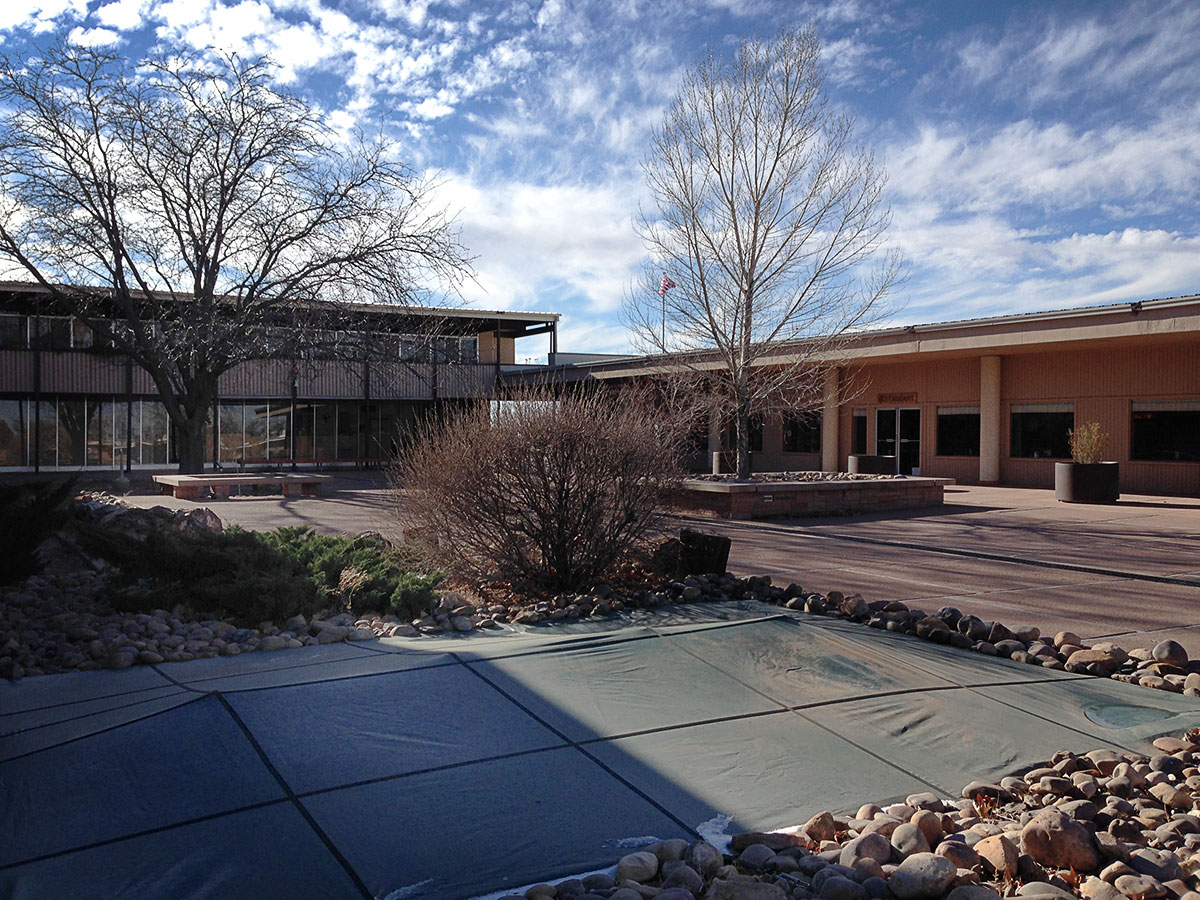 The pond gets uncovered when danger of freezing has passed. If restored, the wall of the Fred Harvey concession behind the three columns on the right would be floor to ceiling windows, and the roof removed from the balcony at left.
The pond gets uncovered when danger of freezing has passed. If restored, the wall of the Fred Harvey concession behind the three columns on the right would be floor to ceiling windows, and the roof removed from the balcony at left.
 The columns are tiled similarly to another Neutra project from the same time period.
The columns are tiled similarly to another Neutra project from the same time period.
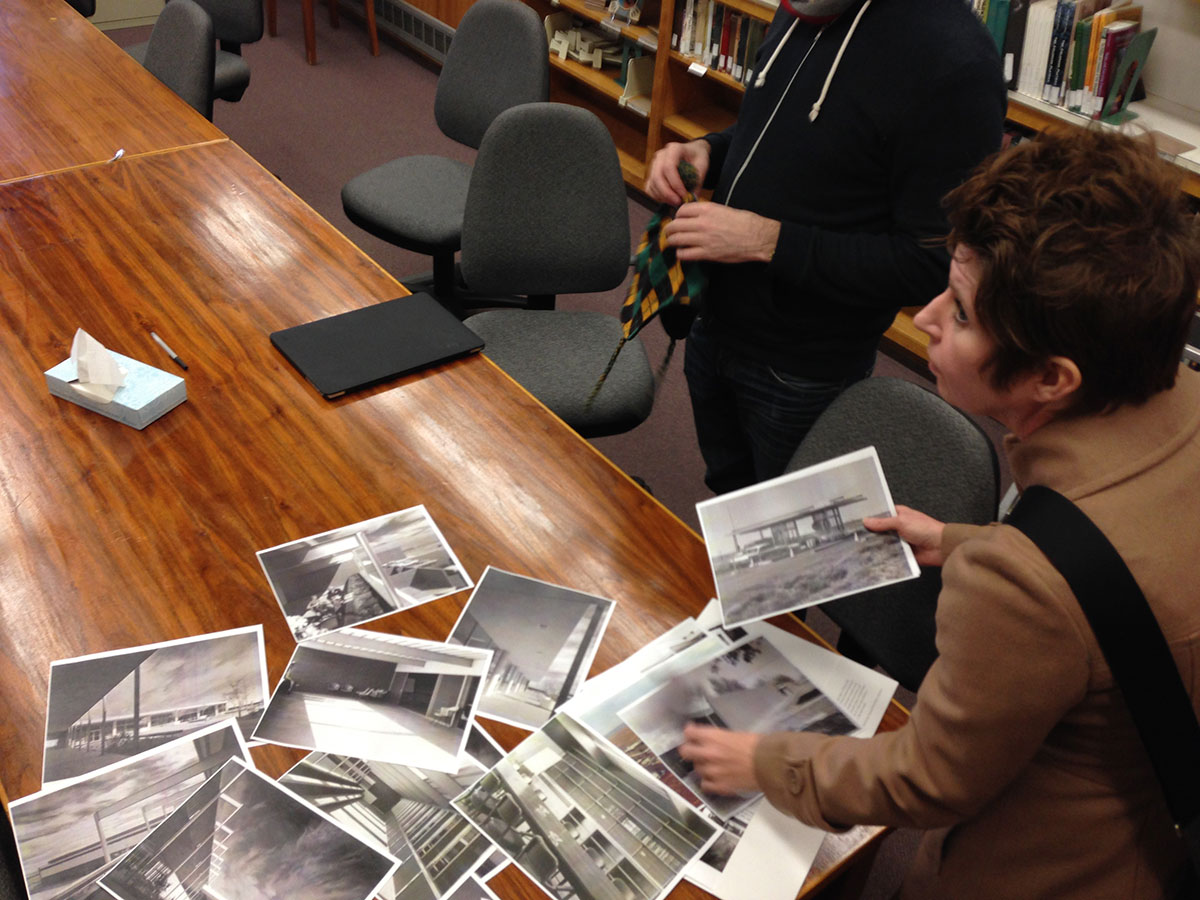 Documentation of the original Neutra design is easily available for restoration of original features. In 2013, the National Park Service demolished the only other Richard Neutra building in its holdings, the Gettysburg Cyclorama. While the Painted Desert complex is not currently under threat, it is important that the community rally around its restoration as the only Neutra project in the State of Arizona and last remaining work of his for the Park Service.
Documentation of the original Neutra design is easily available for restoration of original features. In 2013, the National Park Service demolished the only other Richard Neutra building in its holdings, the Gettysburg Cyclorama. While the Painted Desert complex is not currently under threat, it is important that the community rally around its restoration as the only Neutra project in the State of Arizona and last remaining work of his for the Park Service.
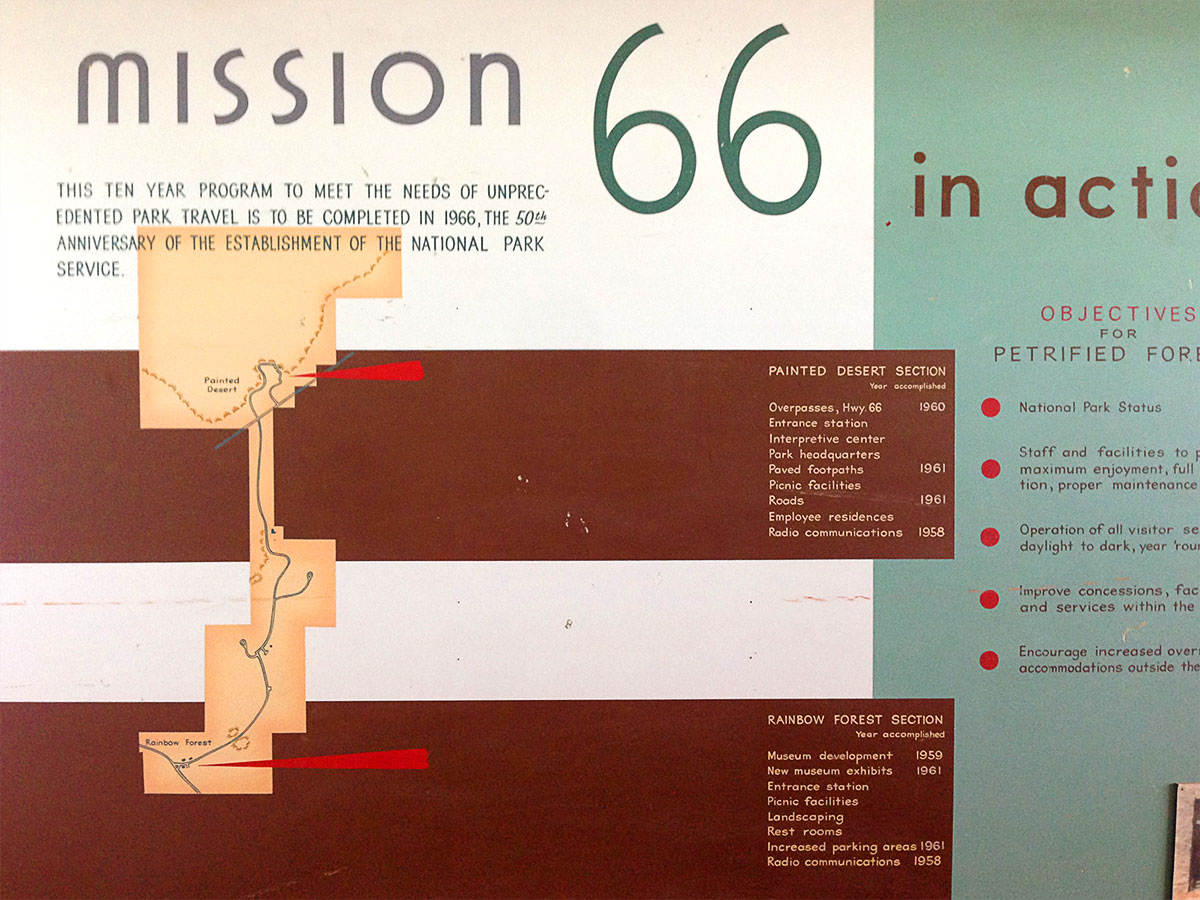 The Mission 66 period of growth in the National Park System was an important and necessary step in the evolution of our nation's history, helping millions of Americans understand and interpret their own environment. It gave birth to the "Park Service Modern" architectural look seen in so many parks today. Consideration of Neutra's Painted Desert Visitor Complex to be designated a National Historic Landmark is already underway, but funds are needed for the restoration of the site.
The Mission 66 period of growth in the National Park System was an important and necessary step in the evolution of our nation's history, helping millions of Americans understand and interpret their own environment. It gave birth to the "Park Service Modern" architectural look seen in so many parks today. Consideration of Neutra's Painted Desert Visitor Complex to be designated a National Historic Landmark is already underway, but funds are needed for the restoration of the site.
Supporters can follow the progress and join the Friends of the Petrified Forest by contacting Kevin Dahl kdahl@npca.org or following the Friends group on Facebook. Fundraising strategies and donations for the restoration of the park facility may be communicated to Brad_Traver@nps.gov. For more about the Mission 66 program visit Christine Madrid French's site and the online book on Mission 66 Visitor Centers. And hey, take a road trip to support your National Parks!
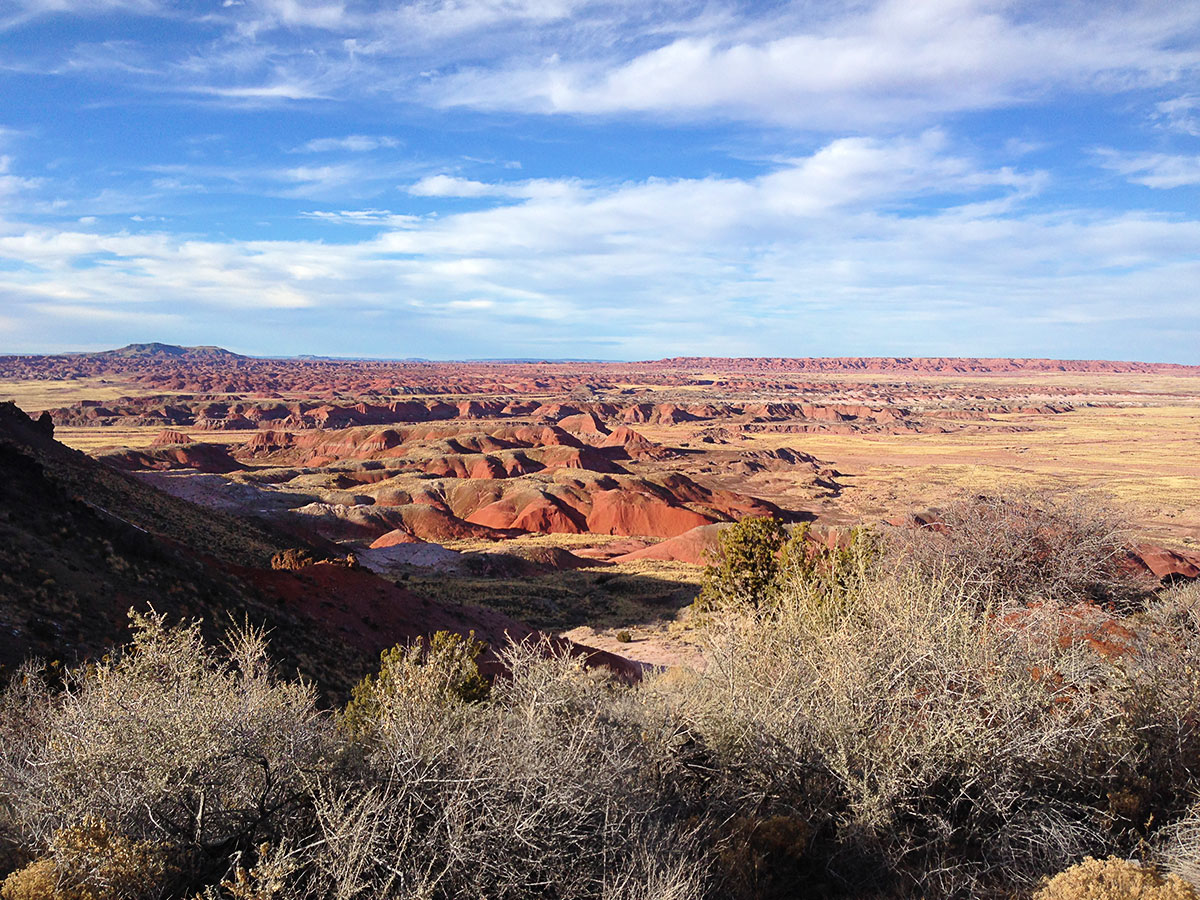
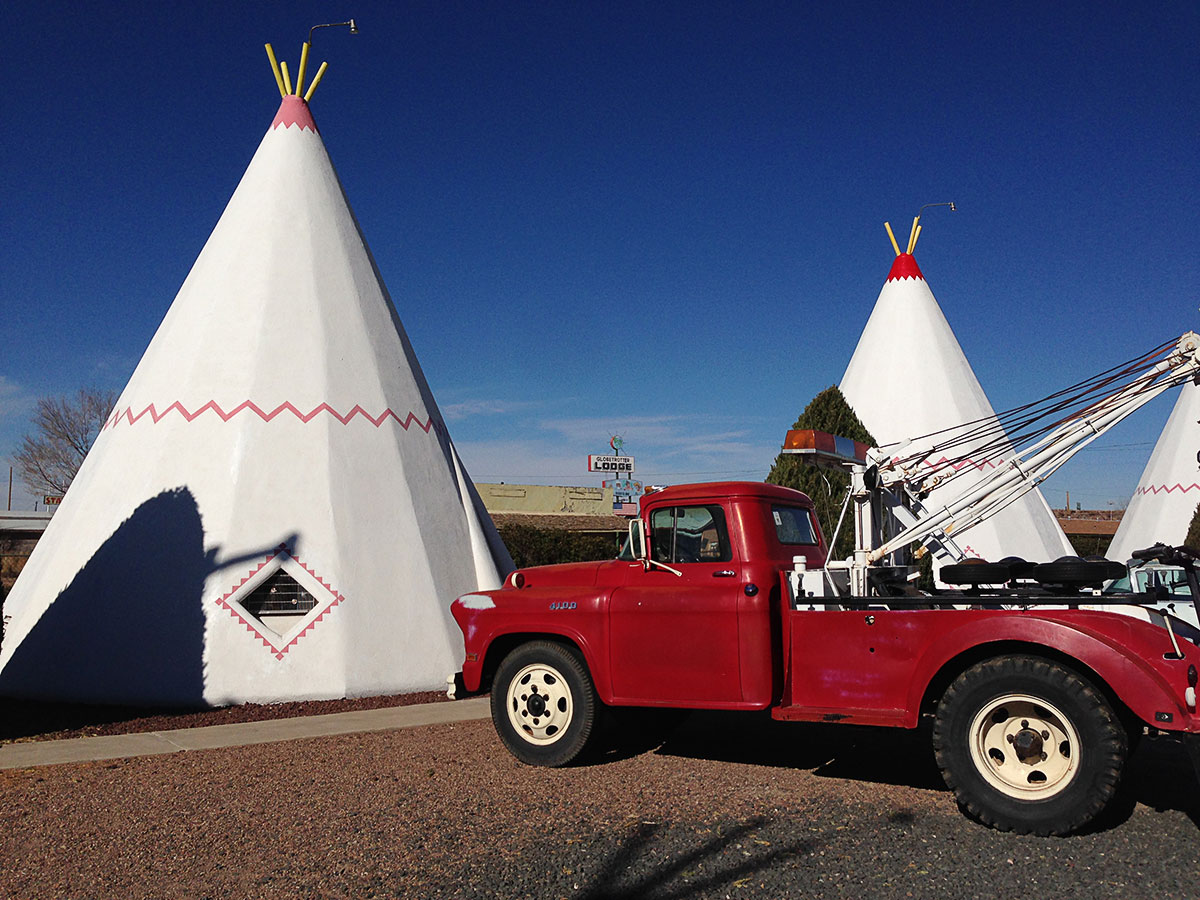
Not Neutra, but the Wigwam Motel nearby—inspiration for the Kozy Kone in Cars.
"Don't you big city race cars ever just take a drive?"